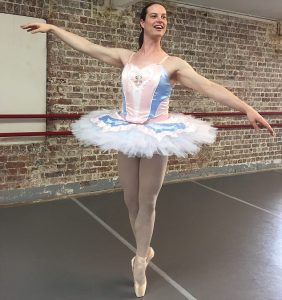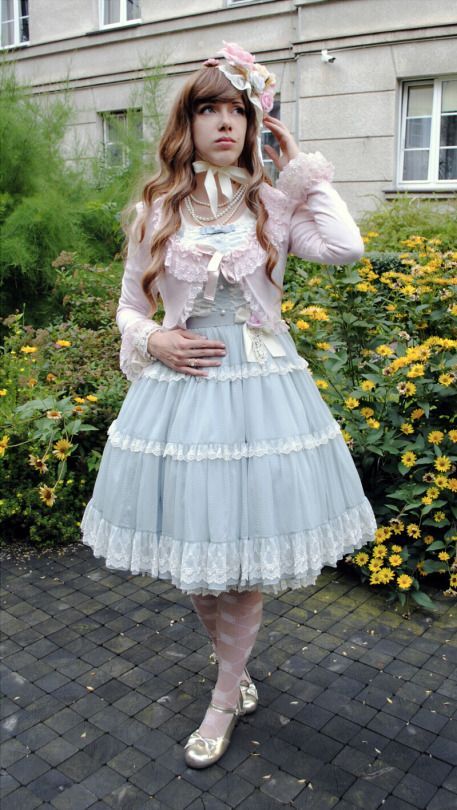Dina’s Diner January 14, 2018
OH, THOSE QUEENS!
The New York Times had a brief interview with one of the RuPaul’s Drag Race girls, Valentina, in the December 20, 2018 edition’s Styles section. I don’t watch RuPaul’s show but I am sometimes impressed by some of the contestants’ beauty when I see them online or, in this case, the newspaper.
The Times interview focused on Valentina’s heritage as a Latina (or Latinx) drag queen. The interview’s introduction mentioned “many moments in which she invoked her Mexican heritage on the show, sprinkling references to Maria Felix [a Mexican patron saint], mariachis, and Catholic bodas [weddings] throughout the season.”
Valentina, whose real name is James Leyva, a 27 year old from California, made a couple of interesting responses to the interviewer’s questions. The interviewer, also a Latina woman, mentions that their community still has negative feelings about “men doing drag and taking on traditionally feminine traits.” Valentina agrees but added this sentiment of understanding for his parents: “Sometimes we want to have the support of our parents right away, but for someone like me, who is Chicano, first-generation, we have to have patience with our parents. Sometimes they are coming from really closed-minded religious backgrounds or from a different country with laws that didn’t protect them. We have to not be so judgmental. Sometimes it takes them a while to turn around and see the bigger picture: that we are happy, that we are deserving of love, we are just like anybody else.”
Asked about how he got started in drag, Valentina responded in a way many of us can identify with on some level. “I’ve always kind of been doing drag. When I was little and I would be taking a bath, I would drape the towel over my body in ways that played with gender without me really knowing it — making it a gown or a train or a hat or a shoulder piece or a cape. Then, having watched “Drag Race” and really loving the idea of putting an outfit together, thrift store shopping, getting a wig and thinking of a drag name got me really excited about it.”
One of the reasons The Times was interviewing Valentina in the first place was her upcoming return to the Drag Race All Stars show. She had been eliminated in an earlier season after a disastrous performance where she forgot the words of the song she was lip-synching. Asked about that debacle, she said, “I didn’t have the lyrics sheet with me, so I had to learn it by ear, and write down the lyrics as I went. I stayed up until like 3:30, and I had to be up at 6. I tried to learn the song. Before I went to sleep, I knew the song. By the time I woke up, I didn’t know the song. People don’t acknowledge the fact that we are busy working the entire time. We are not just sitting there learning songs in our free time, because there is no free time. And so by the time it came time to perform, I was in such a state of shock and I freaked out.”
It’s hard work, this drag queening.
IT’LL KEEP YOU ON YOUR TOES
From the world of ballet came a story from Missoula, Montana. Yeah, I know. Not the place you automatically think of for all things terpsichorean.
The Missoulian newspaper had a feature item about ballerina Sophie Rebecca who is a visiting artist from England to appear in a local production. (Our TGF TWIT feature mentioned this in last week’s edition. It’s so hard to get a scoop around here.) Sophie Rebecca is a trans woman ballerina. The paper reported about the “Ballet Beyond Borders” performance, “throughout the four-day event, dancers participate in activities that center on using dance to advocate for human rights, justice and global peace. As Rebecca walked past the studio on Friday, several dancers waved at her through a window. “I’ve felt so incredibly welcomed here,” Rebecca said.”
The paper provided some of Rebecca’s history. “She always wanted to be a ballerina. She wanted to wear tutus, dance female roles and glide across the stage in front of an audience. That dream was put on hold when she struggled to find a teacher who would accept her as a gender dysphoric boy. At 16, prior to transitioning, Rebecca thought she found a teacher who could help her fulfill her dream to dance. However, they learned of Rebecca’s gender dysphoria and told her that they couldn’t teach her anymore. The experience left Rebecca heartbroken and sent her on a path of trying to act like a boy. She worked as a race car driver and settled in a job in IT, but she still wanted to dance. Rebecca said that she’s faced many challenges not only as a trans dancer, but also as an older dancer.”
Rebecca is “thirty-something” as she told an interviewer. She finally found a teacher who would take her on as a transitioning performer and was later admitted to the Royal Academy of Dance, whose rule changes now permitted them to accept trans dancers. In another article I found about Sophie, it was disclosed that she is also 6’3” tall — another physical anomaly for ballerinas.
Despite her long yearning and years of training, the Missoula event is still among her earliest public performances. The article reported: “Charlene Campbell Carey, the president and executive producer of Ballet Beyond Borders, first invited Rebecca to perform a couple of years ago, shortly after Rebecca transitioned in 2016. Rebecca hesitated at first but finally agreed to perform in this year’s production as her first performance abroad. She said she was nervous about the challenges traveling posed, such as questioning which bathroom to use or how TSA agents would act around her. Since she’s been in Missoula, Rebecca said she’s felt welcomed. She pulled up a photo of some graffiti that she stumbled across while walking along the Clark Fork River between rehearsals that advocated for trans rights.”
“Dance saved me,” Rebecca told the reporter. “If people see me dance and that encourages just one other trans kid, it’s worth it.”
WHO IS THAT STANDING IN FRONT OF THE FIJI WATER GIRL?
All outlets of entertainment media were going crazy over the “Fiji Water Girl” at the recently concluded Golden Globes ceremony. The model who was hired to hand out Fiji water bottles to red carpet guests photobombed almost every celebrity at the event.
I was looking at some of the photos in which she appeared (standing behind or to the side of the stars — but clearly visible and looking right at the lens). One of the photos showed a celebrity couple, neither of whom I knew by sight. But after a second of glancing at the Fiji Water Girl in the background, I noticed that the “female” half of the celebrity couple was actually a dude.
It turns out the “she” was an actor named Cody Fern. Cody was recently in The Assassination of Gianni Versace, American Horror Story and House of Cards. The outfit (shown here) got rave reviews in many fashion and entertainment media. Other Golden Globes participants also drew attention for “queer” fashion: Billy Porter, star of a theatrical version of Kinky Boots, wore a Liberace-esque jeweled cape; Porter wore an orange gown to an earlier industry event; actress Judy Greer wore a men’s full tuxedo with big lapels, bow tie and voluminous trouser legs; actor Timothee Chalamet wore what some described as a sequined harness vest.
So that happened.
But the star of the night was Fiji Water Girl who was quickly identified as model-actress Kelleth Cuthbert. While everyone was enjoying her chutzpah at upstaging all the supposed stars, I found one Debbie Downer who wrote an article on The Huffington Post site headlined “Fawning Over the Fiji Water Girl Ignores the Evils of Bottled Water.” Killjoy, party of one. Don’t invite her to any parties, folks. Invite Kelleth Cuthbert instead.
WHAT BOOB CONDUCTED THIS SURVEY?
I found a fascinating headline on a site called etodays.club. The site is apparently run out of Japan based on the content I saw. The headline that caught my eye was: “60% of Young Boys Hate Cleavage!”
What followed was a maddening attempt to make sense of the article about the survey. It seems that the site must be using some sort of English language translation widget and the result is a comically inept set of unrelated sentences and indecipherable references. Here is the opening paragraph: “As the saying goes, “The chest is not big, there is a ditch.” Heterosexual boys look at the girl’s part at first, except the face is the chest. But nowadays young boys don’t like cleavage? Japan’s recent survey of men’s surveys makes people feel super unexpected.”
Boy, what a bummer when you really want to get to the bottom — or perhaps I should say the top — of a hot topic, and you have a language barrier. As I think about it now, perhaps the headline should be translated that 60% of young boys love cleavage. I mean, that makes more sense anyway.
I was looking for other news sources reporting on this “survey” but I couldn’t find anything on it. Who ran the survey, which boys were surveyed, how big were the cleavage samples being evaluated? So many questions. I did stumble across an article saying it was poor etiquette for women to display cleavage in public in Japan. I find this hard to believe because Japan has a rich pop culture tradition of “Gravure Idols” who appear in magazines as pinup models often showing generous amounts of cleavage.
Well, maybe the young boys are rebelling against their fathers’ generation of cleavage worship. “Dad, I don’t know what you see in these girls with their huge boobs and deep cleavage.” Kids these days!
WASSUP, BRO?
I seem to get odd recommendations on my Pinterest page — based, I suppose, on the algorithm that analyzes my past browsing patterns. But I never even heard of “Brolitas” before they started popping up in the photo suggestions from the all-seeing folks at Pinterest.
The Brolita phenomenon seems to be the crossdressing equivalent to the Lolita cosplay craze first popularized by young girls and women in Japan. I wrote about that years ago when I first encountered it. The Brolitas are distinct from the popular crossdressing subculture of “sissy maids” and the like. As the name implies, Brolitas are young men who get dolled up in elaborate Little Bo Peep dresses, white thigh high socks, round-toed girly shoes and long ringletted wigs. A fifty-something Brolita is an oxymoron although I’m sure some greying-at-the-temples fellas try it.
It does not seem to be a sexually motivated indulgence. The outfits are so elaborate it would be a lot of work to get busy with a Brolita. “Dude, you’re creasing my pinafore” could effectively douse the flames of passion’s ardor.
The youthfulness of the Brolita practitioners often makes it difficult to determine if they are, in fact, guys dressed as girls or real girls doing the Lolita thing. As usual, in all things costumey and a little kinky, the Asian Brolitas are killing it. There are however, some delightful western Brolitas if you spend a little time looking for them. (I know you will, ha.)
I read in one of the internet postings that the term Brolita is offensive to some. Nowadays, someone is always going to be offended at something and I found plenty of sites that used the term freely. The puzzling thing to me is where young men at the beginning of their working lives get the money and time to perfect this very specific interest. Ordering dresses and bloomers and special shoes and wigs and mastering cosmetics . . . it’s more work than fantasy football rosters.
Moved to make a comment? Want to add some spice? Login here and use the comment area below.
Category: Transgender Community News, Transgender Fun & Entertainment, Transgender Opinion








